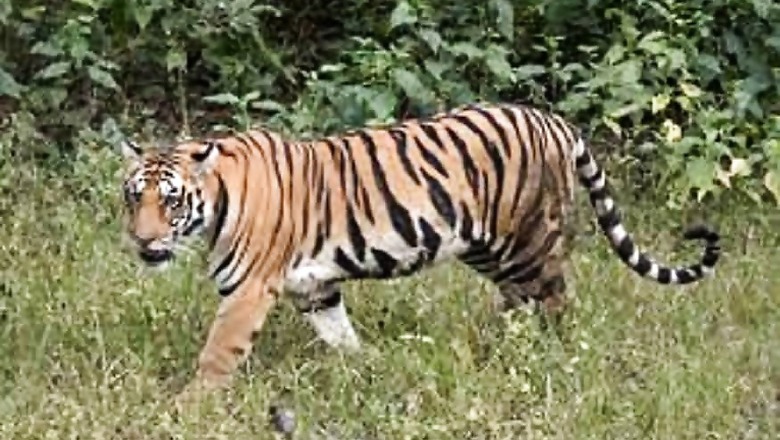
views
New Delhi: An existing road network of about 1.34 lakh km length and nearly 24,000 km of planned roads are threatening Asia’s tiger habitats with degradation, fragmentation leading to a decreased prey base of tigers, a new study has found. This road network is spread across 13 tiger range countries including India, which is home to the highest population of wild tigers in the world.
The study found that an alarming 43% of the area, where tiger breeding occurs, and 57% of the tiger conservation landscapes are within 5 km distance of a road, thus increasing the negative impacts on tigers and their prey.
The study, which essentially mapped the risk posed by road development to tiger conservation, was authored by Neil Carter at the University of Michigan and was published in Science Advances journal. It looked at three important metrics – road density, distance to the nearest road and relative mean species abundance to assess how roads influence tiger habitats.
Road densities were calculated using a global dataset and data on areas that have been accorded a protection status were also taken into account.
The study found that roads in tiger habitats have reduced the abundance of the mammal by about 20% as compared to what would have been if the road density was not as much. This indicated that road networks were affecting abundance of tiger prey and tigers too. A note of concern for India was that with 16% of the world’s tiger conservation landscape, it is expected to add 14,500kms of roads in the coming decades, the study said.
In India, two conservation landscapes, Corbet-Sonanadi and Rajaji, had a high road density. The road density in Rajaji was 628m/km2 and even in two other landscapes, Panna East in Madhya Pradesh and Radhanagari in Maharashtra, the density was high, the study said.
“Our analysis demonstrates that, overall, tigers face a ubiquitous and mounting threat from road networks across much of their 13-country range,” said Carter, an assistant professor at the School for Environment and Sustainability, University of Michigan.
Why are roads a threat to tiger habitats?
Roads affect wildlife as they cut through contiguous forest patches and crucial habitats that allow migration of wildlife. This barrier affects gene flow too and poses risk of mortality as speeding vehicles routinely crush wildlife. With an increase in access to remote forest areas, the risk of resource depletion, poaching and human pressure on wildlife also increases.
In India, many studies done in the recent years have shown the real threat posed by expansion of road networks through forested patches and tiger habitats. A 2018 study of the Wildlife Conservation Trust on tiger landscapes in Central India and Eastern Ghats showed that out of a total of 1697 linear infrastructure projects (roads, railways, canals) that sought forest land, 399 were likely to have a negative impact on tiger corridors. Four years ago, the National Highways Authority of India began expansion of the National Highway-7 connecting Varanasi to deep southern India and the expansion has threatened wildlife in the Kanha-Pench tiger corridor, rated as the best tiger corridor by authorities and conservationists alike.
Road expansion plans
In Asia alone, the road length is expected to double between 2017 and 2020, as per the study. China’s Belt and Road Initiative (BRI), for example, is considered the largest infrastructure project of all time and will entail major risks to biodiversity across Asia, as well as Eurasia and parts of Africa. Many of these new roads and highways will likely traverse reserves or other highly biodiverse areas, the study highlighted.















Comments
0 comment